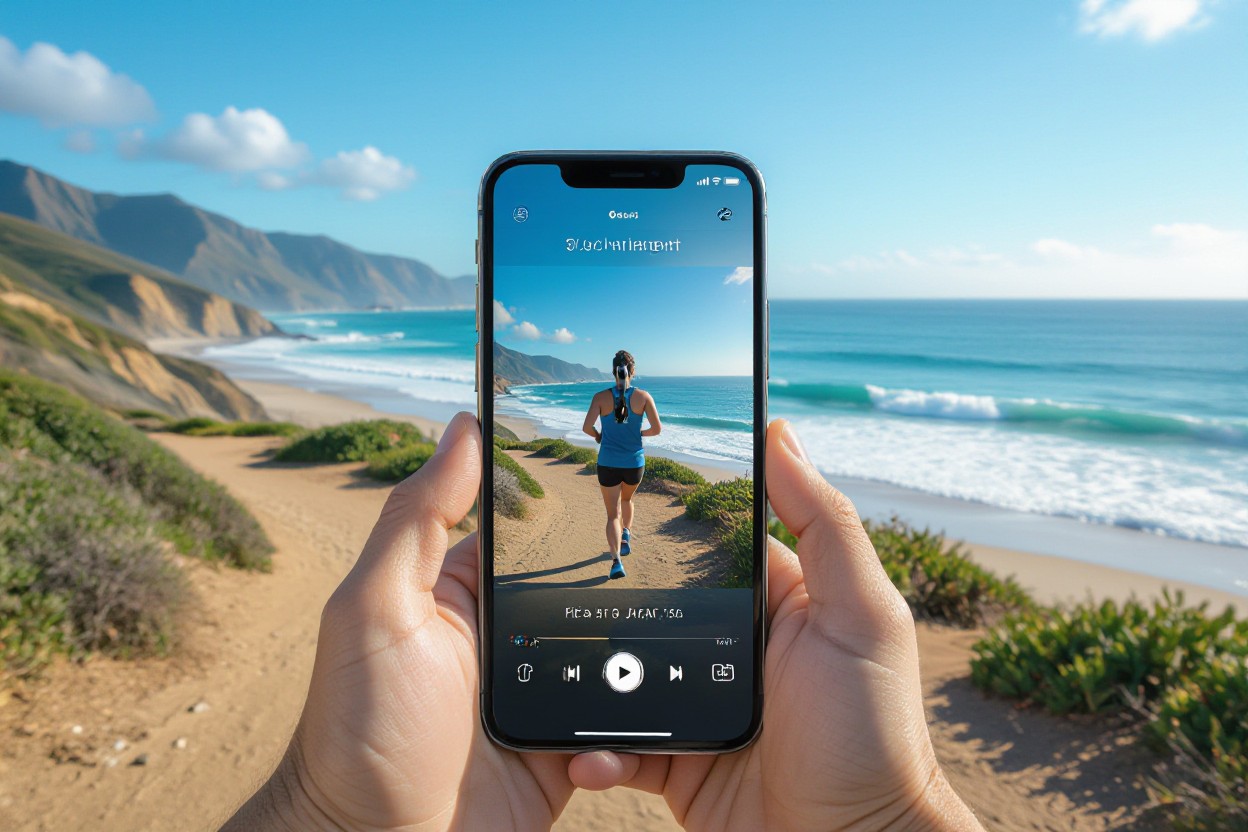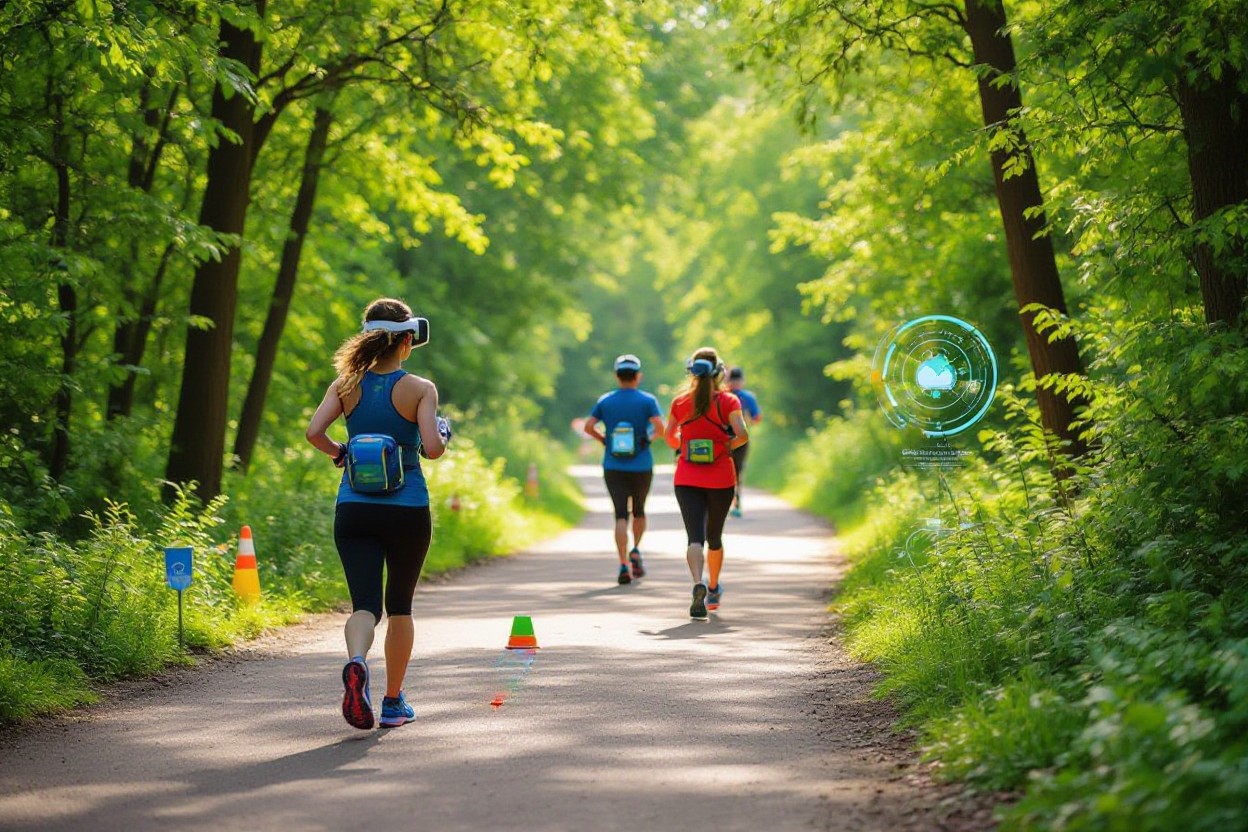Over time, running can sometimes feel repetitive or dull, but you have the power to transform your experience instantly. By incorporating simple yet effective techniques, you can boost your motivation, improve your mood, and even reduce the risk of injury. Whether you’re a beginner or an experienced runner, these 17 easy ways will help you enjoy your runs more, making every step feel rewarding and exciting. Ready to discover how to turn your next run into a positive and energizing adventure? Let’s get started!

The Power of Playlist: How Music Elevates Your Running Experience
Music has a remarkable ability to transform your running sessions into something more engaging and enjoyable. Matching beats to your stride can distract you from fatigue and even enhance endurance. Research shows your brain releases dopamine while listening to energizing tunes, boosting your mood mid-run. Carefully selected tracks not only uplift your spirits but also help maintain a steady pace, making those long distances feel manageable. Harnessing the power of a great playlist turns running from a routine challenge into an immersive and motivating experience.
Crafting the Perfect Running Mix
Design your playlist by blending high-energy songs with varying tempos to mirror different running phases—warm-up, peak effort, and cool-down. Include tracks with beats per minute (BPM) around 150-180 to naturally sync with your stride rate, which typically hovers between 160-170 steps per minute for many runners. Mixing familiar favorites with fresh tunes keeps things exciting, while throwing in some instrumental or lyric-light tracks avoids mental fatigue. Rotate playlists regularly to prevent boredom and maintain that sense of anticipation each time you lace up.
The Psychology of Rhythm and Pace
Rhythm profoundly influences your running cadence, acting as an auditory metronome that helps regulate your steps. When your footfalls align with a song’s beat, you often find yourself running more efficiently and with less perceived effort. Studies highlight that synchronizing movement to rhythm can reduce oxygen consumption by up to 10%, effectively making your run feel easier. Leveraging this natural response, syncing your stride to music can optimize performance and elevate your overall running rhythm.
Diving deeper, the brain areas responsible for motor control and auditory processing closely interact, enabling rhythmic auditory stimulation to optimize muscle coordination. This neural coupling accelerates movement patterns, stabilizes gait, and improves endurance by creating a predictable and reinforcing feedback loop. Less erratic pacing reduces injury risk and mental fatigue, translating to more consistent training sessions. Tuning into rhythmic music thus promotes a flow state, where physical effort aligns harmoniously with mental focus, enhancing both efficiency and enjoyment throughout your run.
Embracing Nature: Transforming Your Run with Scenic Routes
Shifting your path to scenic routes offers a refreshing twist that can reignite your passion for running. Trails meandering through lush forests, along sparkling lakes, or over rugged hills not only challenge your body differently but also engage your senses in new, invigorating ways. The ever-changing natural scenery provides a mental boost, reducing the monotony often felt on urban tracks. You might find your pace naturally picking up as the beauty around motivates you to explore further, while the sounds of birds and rustling leaves create a peaceful, immersive atmosphere for your run.
Finding Hidden Trails in Your Area
Local parks, nature preserves, and even lesser-known paths behind neighborhoods often host hidden running trails just waiting to be discovered. Apps like AllTrails or TrailLink can guide you to these gems, offering user reviews and difficulty ratings to help you choose. Checking community boards or social media groups focused on local outdoor activities is another way to uncover secret routes. Venturing onto these less-traveled paths introduces variety, minimizes foot traffic interruptions, and gives your run a fresh sense of adventure.
The Benefits of Outdoor Runs for Mental Health
Running outdoors significantly amplifies psychological benefits compared to indoor sessions. Exposure to natural sunlight boosts your vitamin D levels, which has been linked to improved mood and reduced symptoms of depression. The natural environment fosters mindfulness, helping you focus on the present moment and easing anxiety. Studies have shown that outdoor runners report lower stress levels and better overall emotional well-being, making your run not just a physical workout but an effective mental health practice.
Further research highlights that even brief sessions of outdoor running can lead to measurable reductions in cortisol, the body’s primary stress hormone. Additionally, green spaces promote enhanced cognitive functioning, improving memory and creativity post-run. The combined effect of fresh air, sunlight, and natural surroundings helps reset your nervous system, making you feel recharged and more resilient in facing daily challenges beyond your workout.
Building a Community: The Joy of Running with Friends
Linking up with a running crew adds a whole new layer of enjoyment and commitment to your workouts. Beyond simply sharing the miles, running with others creates a supportive environment that amplifies motivation and accountability. The camaraderie you build encourages safer pacing, offers encouragement during tough stretches, and turns every run into a social event. Whether it’s a casual jog or a spirited training session, running with friends turns exercise into an experience filled with laughter and shared achievement, helping you stay consistent and engaged.
Organizing Group Runs: Tips and Tricks
Kickstarting your own group run involves a combination of planning and flexibility. Focus on selecting a convenient location and time that suits most participants. Set clear expectations on pace and distance to ensure everyone stays comfortable and motivated. Encourage participants to bring snacks or share post-run refreshments to boost social bonding. Utilize apps and social media for effective communication and reminders. Your group’s success depends on consistent scheduling and respectful pacing—this keeps enthusiasm high and turnout steady. After assembling a close-knit crew, you’ll notice running turns into a much-anticipated group event rather than a solitary task.
The Impact of Accountability on Motivation
Sharing goals with your running circle dramatically enhances your drive to stick with a regimen. Analyzing studies, those who run with others tend to complete workouts 30% more often than solo runners, showing that accountability creates a powerful sense of responsibility. Friends check in on progress, celebrate milestones, and help overcome mental hurdles. Emotional support and external expectations combine to make quitting less likely. After experiencing community-backed accountability, you often find yourself pushing extra miles or faster splits, motivated not just by personal goals but by the team’s collective spirit.
Delving deeper, accountability changes your mental approach to training. When you communicate your targets publicly or regularly attend group sessions, your commitment solidifies into a routine hard to break. The psychological encouragement from peers reduces the perception of effort, making hard runs feel more manageable. Furthermore, tracking progress together fosters healthy competition and shared joy in improvement, transforming your running journey into a social milestone as much as a physical one.

Gamifying Your Run: Making Miles Feel Like Gameplay
Transform your run into an engaging experience by adding game-like elements, turning each step into a level-up moment. Tracking progress through points, badges, or unlocking rewards taps into your natural motivation and competitive instincts. Imagine chasing a virtual dragon every mile or turning your neighborhood into a treasure map filled with checkpoints. This approach keeps your mind actively engaged, reduces perceived effort, and makes consistent training more enjoyable and less monotonous.
Setting Challenges: From Virtual Races to Local Competitions
Signing up for virtual races introduces a fresh layer of accountability and excitement by racing alongside a global community, regardless of your location. Alternatively, local competitions can intensify motivation by bringing a social element and friendly rivalry. Setting personal benchmarks like “beat my last 5k time by 30 seconds” or joining monthly mileage challenges helps inject purpose into your routine. These challenges drive you to push limits, offering tangible goals beyond simply completing a run.
The Role of Fitness Apps in Enhancing Experience
Fitness apps seamlessly incorporate gamification with features like live leaderboards, achievement badges, and interactive maps, turning your runs into immersive adventures. Apps such as Strava and Zombies, Run! blend social connectivity with storytelling, amplifying engagement and helping you visualize progress through detailed stats and community support. These platforms amplify motivation with real-time feedback, motivating you to stay consistent and beat your personal records.
Diving deeper, fitness apps tap into behavioral science by rewarding consistency and effort, effectively creating positive reinforcement loops. For example, Strava’s segments allow you to compete against others or your past performances on specific route sections, creating mini-goals within your run. Zombies, Run! adds narrative-driven missions where you outrun virtual zombies, keeping you entertained and distracted from fatigue. Furthermore, apps often integrate with wearable tech, enhancing precision in tracking vitals and movement, which helps you tailor your efforts and optimize training outcomes.

Mindful Running: Finding Flow in Every Step
Infusing your runs with a sense of mindfulness transforms routine exercise into a meditative practice. By shifting focus inward, you tap into a rhythm that feels effortless and deeply satisfying. Noticing the subtle sensations in your muscles, your breath, and your surroundings anchors you to the present moment. This awareness helps you slip into a flow state where distractions fade and every step feels purposeful, enhancing both your mental clarity and physical endurance.
Practicing Presence: Techniques for Mindful Running
Ground your run by synchronizing your breath with your strides—inhale for three steps, then exhale for three. Engage a sensory check-in: feel the texture beneath your feet, the breeze against your skin, and the sounds around you. Occasionally, perform a quick body scan to release tension in your shoulders or jaw. These small but consistent practices sharpen your focus, reduce mental chatter, and deepen your connection to the movement, transforming running into a moving meditation.
The Benefits of Meditation and Breathwork on Performance
Incorporating meditation and controlled breathwork not only calms your mind but also enhances your physiological efficiency. Studies show that runners who engage in regular breath control techniques can improve oxygen uptake by up to 15%, boosting stamina. Meditation aids in stress reduction, which translates to faster recovery times and less perceived effort during intense runs. These methods together help you sustain a steady pace, delay fatigue, and elevate your overall running experience.
Delving deeper, meditation trains your brain to maintain focus despite discomfort or distractions, a skill imperative for long-distance running. Practicing pranayama or diaphragmatic breathing strengthens your respiratory muscles and improves CO2 tolerance, which enhances endurance. For example, athletes practicing box breathing often report improved race times by better managing pre-run anxiety. Integrating short mindfulness or breathwork sessions pre-run primes your nervous system, making your body more efficient at both delivering oxygen and clearing metabolic waste during high-intensity efforts.
Incorporating Fun Variations: Spice Up Your Routine
Introducing new elements to your running routine not only keeps boredom at bay but can also boost your performance. You might swap a straightforward jog for a trail run to experience varied terrain and beautiful scenery. Alternatively, combine running with bodyweight exercises at intervals to challenge different muscle groups. Even small changes, like altering your route or running with upbeat music, can ignite motivation. The key lies in infusing your runs with unexpected twists that align with your interests, making each session feel fresh and engaging without sacrificing your training goals.
Interval Training: Mixing Up Speed and Endurance
Interval training breaks your run into segments of high-intensity bursts followed by recovery periods, dramatically enhancing both speed and endurance. For example, sprinting for 30 seconds, then jogging for 90 seconds, repeated 6–8 times, pushes your cardiovascular limits and elevates calorie burn. These bursts keep your brain engaged and make time fly by, turning what might be a monotonous steady run into an exciting challenge. Adjust the duration and intensity to fit your fitness level, and watch how these varied paces transform your daily run into an energizing workout.
The Surprise Factor: Unexpected Changes to Keep It Fresh
Injecting spontaneous elements into your run can turn routine routes into thrilling adventures. You could incorporate random detours to explore new areas, or challenge yourself with impromptu uphill sprints when you least expect it. Another approach is to set arbitrary “checkpoints” where you push your pace or perform quick exercises like burpees. These surprises jolt your mind and body, preventing monotony and fostering a playful, curious attitude towards running that keeps motivation high and boredom low.
Adding surprises during your run activates a sense of unpredictability that makes each session feel unique. For instance, you might decide on the fly to race a local runner or take a spontaneous detour towards a park you’ve never visited. Such decisions not only break routine patterns but also stimulate your brain’s reward system, increasing dopamine levels that enhance pleasure. Studies have shown that periods of novelty and unpredictability can make physical activity more enjoyable and sustainable over time, turning running from a chore into an anticipated experience.
Summing up
Drawing together the 17 easiest ways to make your next run more fun, you can transform your routine by incorporating simple changes like choosing scenic routes, listening to upbeat music, or running with a friend. By varying your pace, setting achievable goals, and celebrating small milestones, you keep your motivation high. These strategies not only enhance enjoyment but also improve your overall running experience, making each session something you look forward to rather than a chore.
FAQ
Q: How can I add variety to my running routine to make it more enjoyable?
A: Introducing new routes, running with friends, or trying different terrains like trails or parks can break the monotony and make your runs more interesting. Changing your environment keeps your mind engaged and adds an element of adventure to your workouts.
Q: What role does music play in making running more fun?
A: Listening to your favorite upbeat songs or creating a motivating playlist can boost your mood and energy levels during a run. Music helps distract from fatigue and enhances the overall running experience by keeping your tempo steady and spirits high.
Q: How can setting small goals improve my running enjoyment?
A: Setting achievable goals, such as running a certain distance or improving pace, provides a sense of accomplishment. These milestones can keep you motivated and make your runs feel purposeful, turning each session into a satisfying challenge.
Q: Is running with a group a good way to make running more fun?
A: Absolutely! Running with others introduces a social element that can make workouts more enjoyable. Group runs offer encouragement, accountability, and the chance to meet like-minded people, which can improve consistency and morale.
Q: How does varying my running pace influence the enjoyment of my runs?
A: Incorporating intervals or alternating between sprints and steady pace can add excitement and prevent boredom. Mixing up your speed challenges different muscle groups, making your runs mentally stimulating and physically rewarding.
Q: Can incorporating technology enhance the fun of running?
A: Using running apps or wearable devices to track progress and set challenges can be motivating. Features like virtual races, achievement badges, and performance stats provide interactive elements that make running feel like an engaging game.
Q: What are some creative ways to reward myself after a run?
A: Treating yourself to a favorite healthy snack, a relaxing stretch session, or a fun recovery activity like a short walk in nature can add positive reinforcement. Rewards create a mental association between running and pleasure, encouraging you to keep up the habit.
